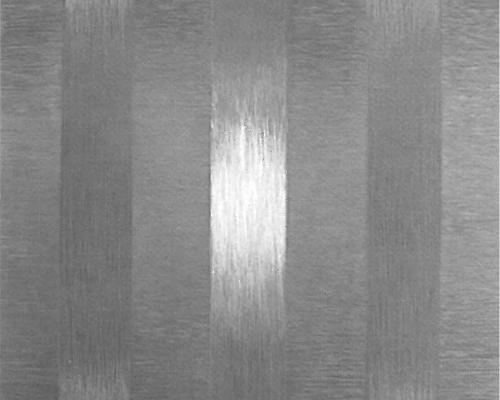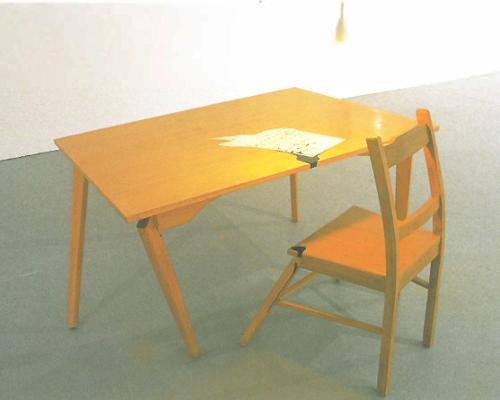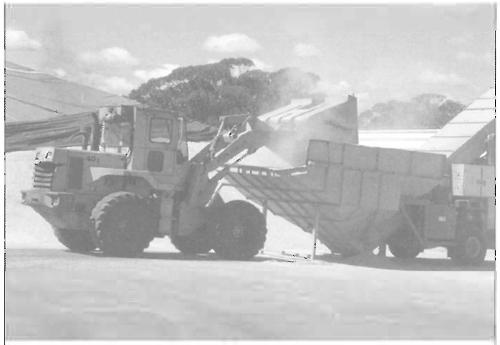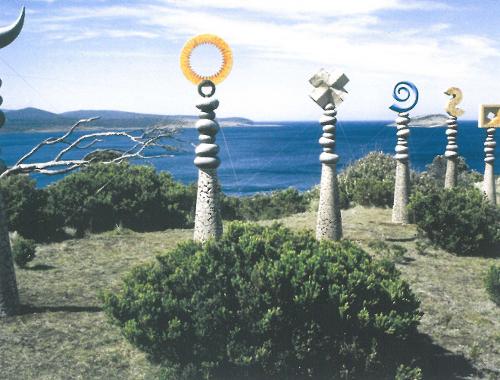Search
You searched for contributors, issues and articles tagged with Pollution ...
Contributors
Artlink
Alison Kubler
Belinda Daw
Cath Cantlon
Dr Jim Puckridge
Edwina Bartleme
Gail Cameron
James Moss
Jane Barney
Joanna Mendelssohn
John Smith
Jude Adams
Judith McGrath
Juliette Peers
Ken Orchard
Kevin Murray
Lisa Chandler
Malcolm McKinnon
Marlene Suchecki
Penelope Richardson
Peter Grant
Peter Hay
Ray Norman
Raymond Arnold
Robyn Daw
Sean Kelly
Stephanie Britton
Stephanie Radok
Toni Ross
Vivonne Thwaites
Issues
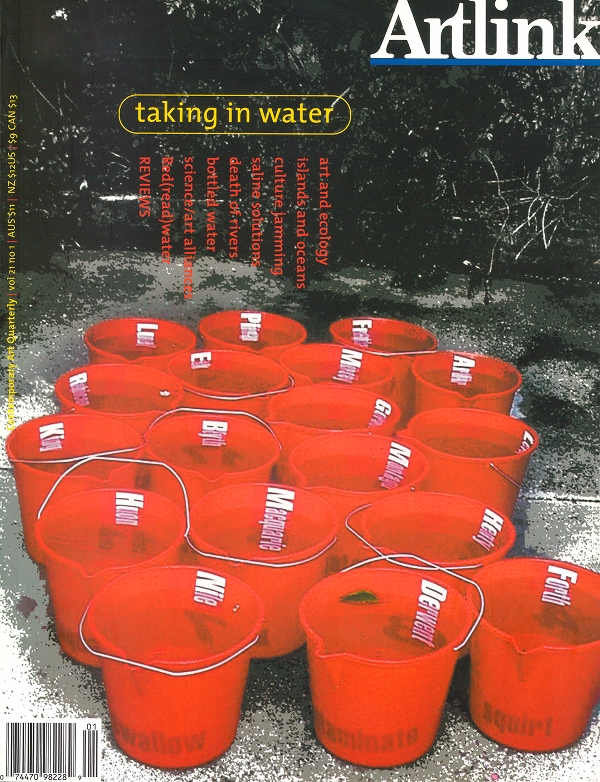
Taking in Water
Issue 21:1 | March 2001
Articles
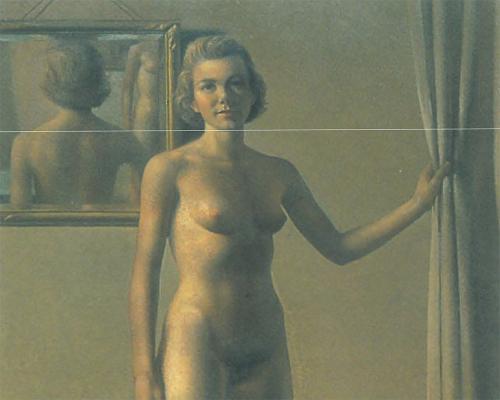
Modern Australian Women: paintings & prints 1925-1945 and In Context: Australian Women Modernists
Curator: Jane Hylton Art Gallery of South Australia 24 November 2000 - 25 February 2001 Curator: Paula Furby Flinders University Art Museum 8 December 2000 - 17 February 2001
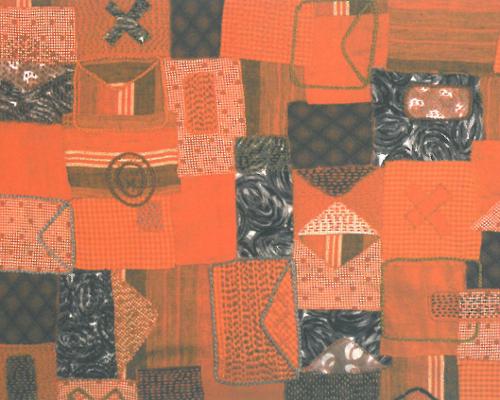
Bias
An exhibition of contemporary embroidery Moonah Arts Centre. Hobart 17 November - 22 November 2000

Looking at Yourself Looking at Yourself
Martin Smith, Sharon Green and Annie Hogan Stratton Gallery, Brisbane 15 - 23 December 2000

Time, Gentlemen, Please
Art Association of Australia and New Zealand Conference Queensland University of Technology, Brisbane 7-10 December 2000
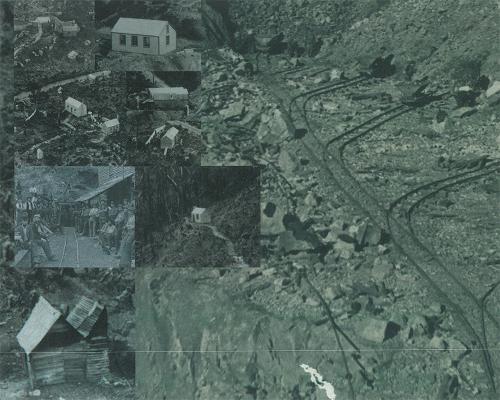
Mining the Imagination
Old Mine Management Office Queenstown Martin Walch, Richard Bladel, Leisa Tyler, Poonkhin Khut 1 December 2000 - open-ended

World Without End: Photography and the 20th Century
Art Gallery of New South Wales 2 December 2000 - 25 February 2001
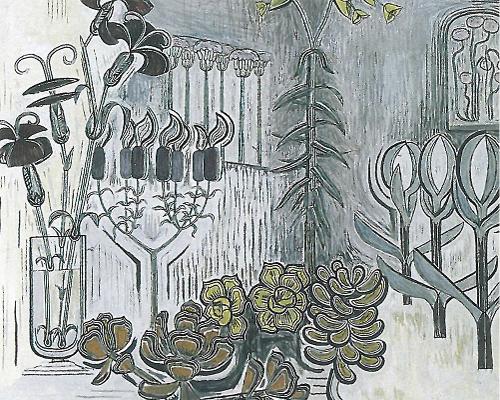
Another Look: Six Women Artists of the 1950s
Inge King, Erica McGilchrist, Helen Maudsley, Mirka Mora, Norma Redpath, Dawn Sime Heide Museum of Modern Art 18 November -7 January 2001
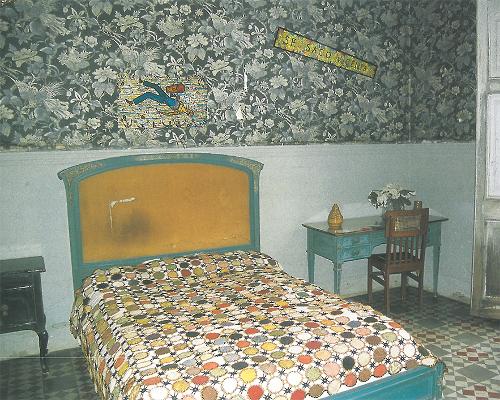
7th Havana Biennial Uno mas cerca al otro
La Cabaña and El Moro (the old fort) and multiple city venues 17 November 2000 - 1 January 2001
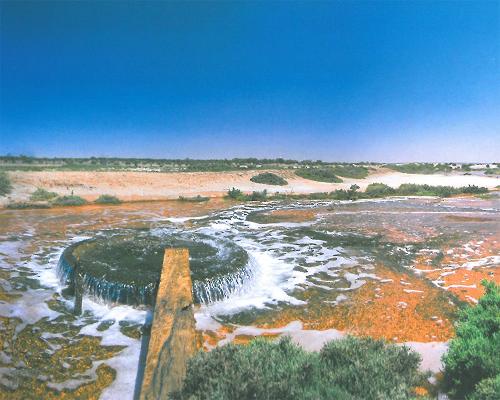
Simulating the Flow
Alfred Deakin was not a man to muck about. As well as being a major player in the long campaign to establish an Australian Federation, he was an indefatigable crusader for irrigation, pushing hard to establish a pioneer industry. As President of a Royal Commission on Water Supply & Irrigation, Deakin visited and studied Californian irrigation schemes in 1885.

Interceptions: Art, Science and Land in Sunraysia
Editor Helen Vivian Mildura Arts Centre and Artmoves, 2000

Reading the Waters
Norman has based this article around Terry White's concept of 'land literacy', a notion he defines as 'the ability to read and appreciate the signs of health [and ill-health] in a landscape'. From a cultural perspective, the land literacy idea quickly compounds itself into a multi-dimensional concept and perhaps a new discipline 'Landliteracy' that calls into question interdisciplinary demarcations, understandings of home, perceptions of the land and how we might experience place. Furthermore, Norman has used this concept as a way of discussing artmaking operations in relation to the landscape and the idea of 'waterliteracy'. Britain's Common Ground Movement, the work of Craig Andrae and the art project website redreadwater.com are here referred to.

Wild Art at the World's End
During the 1970s and 1980s conservation battles were fought over the meaning of wild places such as Tasmania - previously regarded as Australia's deep south - a pioneering place where the normal rules hardly seemed to apply. Grant looks at some of conservation battles both lost and saved during this time, and at one of the key agents for change, a wilderness photographer, the late Peter Dombrovskis. As a result of Dombrovskis' important work, the Tasmanian arts community and two government bodies have come together to try and ensure that this arts/environment symbiosis continues. Some other key artists discussed in this article are Julie Gough, David Martin, Tim Pugh, Anthony Curtis and Kim Kerze.

Dinoflagellates and Art: Jane Quon's Marine Installations
Jane Quon has evolved from printmaker to multi-media installation artist - though she much prefers the descriptor 'ecological artist'. Her installations make strong use of 'ephemeral' media - light, sound - and her focus is the quality of the marine environment, within that the threat to vulnerable aquatic ecosystems posed by the dumping of ship ballast water. Quon has been involved in a number of ecological projects, including installations at the new headquarters of the Centre for Living Aquatic Resources Management in Penang, the International Maritime Organisation building on the Thames Embankment in London and was part of the CSIRO's Metis exhibition in Canberra. Hay here pays particular attention to her installation devised for the Bass Strait Forum in Launceston in December 2000.

Nola Farman's Wind Tree
Nola Farman's The Wind Tree is one of a series of three permanent public artworks commissioned in 1998 by Griffith Artworks, Queensland College of Art, and installed at the new Logan Campus of Griffith University south of Brisbane. The Wind Tree stands on a site that was once occupied by indigenous inhabitants and from the time of white settlement until the recent sixties, the homestead site of the dairy cattle stud Ellerslie. The Wind Tree has been christened according to a traditional pedagogical symbol: the Tree of Knowledge. Ross examines Farman's site specific work in relation to its complex functional and aesthetic qualities.

Reflections on the Noosa River
In early 1999, Gregory Pryor spent 28 days in meditative reflection on the Noosa River. The resulting work and exhibition, Wearing Clothes on the Noosa River, presented the complete drawing cycle of 224 parts at the Noosa Regional Gallery. In this personal intervention in Noosa, Pryor has produced a record of cyclical flow and the passing of time. The artist's written and visual observations encompass minute details of daily life - its sights, smells and sounds - juxtaposed with ruminations on the metaphysical, the power of nature and the interconnectedness of life. Other artists who have been involved with the 'river residencies' at Noosa and the creative documenting of other important water ways include Christine James, Scott Avery and Britt Knudsen-Owens.

Water and Dust: Coongie Lakes
To non-indigenous people, Australia has often seemed a paradoxical, even perverse country. It is indeed the most climatically unpredictable of all continents - a land where seasonal cycles are overwhelmed by unpredictable drought and flood. Dr Puckridge examines this fact about Australia, with a particular focus on the Lake Eyre Basin and Coongie Lake. This article includes text by artists Peter Richards and Erika Calder who work extensively alongside Dr Puckridge in their ongoing pursuit to inform and educate the wider community on the importance of working co-operatively with all the different and varied users of the Lake Eyre Basin.

Karra: River Red Gum
Karra was a visual arts project devised for the 2000 Adelaide Festival. Its focus was the River Red Gum, once the most widespread tree in south eastern Australia and quite justifiably an Australian icon. The project comprised an installation by three artists Chris De Rosa, Agnes Love and Jo Crawford in the Artspace Gallery, Adelaide Festival Centre, from 1 March to 20 April, and a 40 page publication with essays and visual material from many contributors. As curator, Thwaites' intention for Karra was for people to consider their connection with the tree as well as the urgent problems facing this ecosystem, such as salinity, diminished water flow and environmental degradation.
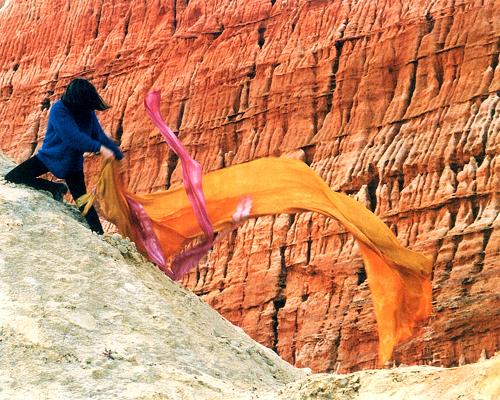
The Waterworks Project
Culturally, spiritually, intellectually, water runs through our lives creating and suggesting connection and renewal. All life depends on water. Like those European explorers who encountered this land so recently, the artists who worked on the Waterworks project searched to make sense of the many manifestations and meanings that water has. It is no real surprise that survival was the thread that connected most of the thinking of the artists. The project saw the work of artists Cameron Robbins, Malcolm McKinnon, Lisa Philip-Harbutt, Jo Crawford, James Darling, Catherine Truman, Graeme Hopkins, Jonathon Novick and Elena Gallegos.

Staring at the sea, staring at the sand: the work of Matthew Dalziel and Louise Scullion
Humanity's universal relationship to the environment has always been at the heart of Matthew Dalziel and Louise Scullion's work, and in large part stems from their own working and living proximity to the ocean on the coastline of Scotland in the fishing village of St Combs. Kubler conducts an examination of some of Dalziel and Scullion's installations, many of which offer that most magical and rare thing in art, the miraculous. Kubler looks at their collaborative works General Release, Sargassum, Rain and Melt and the various ways they have explored the Nature/Culture dichotomy. In particular cyclical weather patterns and mankind's evolving interaction with Nature.

A Water or a Light
Water figures in Australian art and Australian history as a vital thread binding together many narratives and imageries. Art that concerns itself with some manifestation of water demonstrates what can be considered a new phase in Australian art about the land. David Keeling, Nicole Ellis, Ruby Davies, Peter James Smith, Patricia Picinnini, Judy Holding and Danielle Thompson are all Australian artists whose work is manifested by this notion of the land and of water.

Thirsty Work
This article tells the story of the Irish engineer CY O'Connor who was appointed to oversee the construction of the pipeline that would supply the Kalgoorlie goldfields with fresh water and whose suicide caused much controversy in the region. The O'Connor monuments throughout the south of Western Australia are now being joined by contemporary sculptures that tell the other side of the story and play on the anxieties buried below. Anne Neil and Adrian Jones have developed works such as Death by Water which acts as a thirsty allegory of CY's life and Water Carrier which encourages visitors to listen to the trickle of despair that is so ingrained in the history of Kalgoorlie.

Art and Landliteracy Forum
The Art and Landliteracy Forum (ALF) was established within the School of Contemporary Arts at Southern Cross University in 1996. It was convened as an ongoing forum for investigating ways in which contemporary arts practice can be pro-active in relation to environmental issues. The program evolved into a series of placemaking/placemarking projects that were focused on contributing to cultural sustainability.

Wasted
Metis is a remarkable fusion of art and science. The first of these biennial events, held in May 1999, was inspired by Rebecca Scott from the CSIRO and Canberra artist Jill Peck, and featured works which resulted from a range of collaborations between artists and scientists. Metis 2001 - Wasted focuses on environmental themes including detritus, recycling, toxic waste and land degradation.
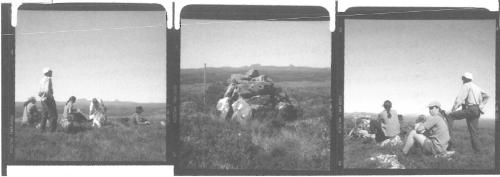
Art and Landscape in Tasmania
Robyn Archer has moved from Adelaide to direct Tasmania's first international arts festival. 10 Days on the Island is a clever poem that steps around the customary wilderness branding of the state and links Tasmania into a productive global context.


